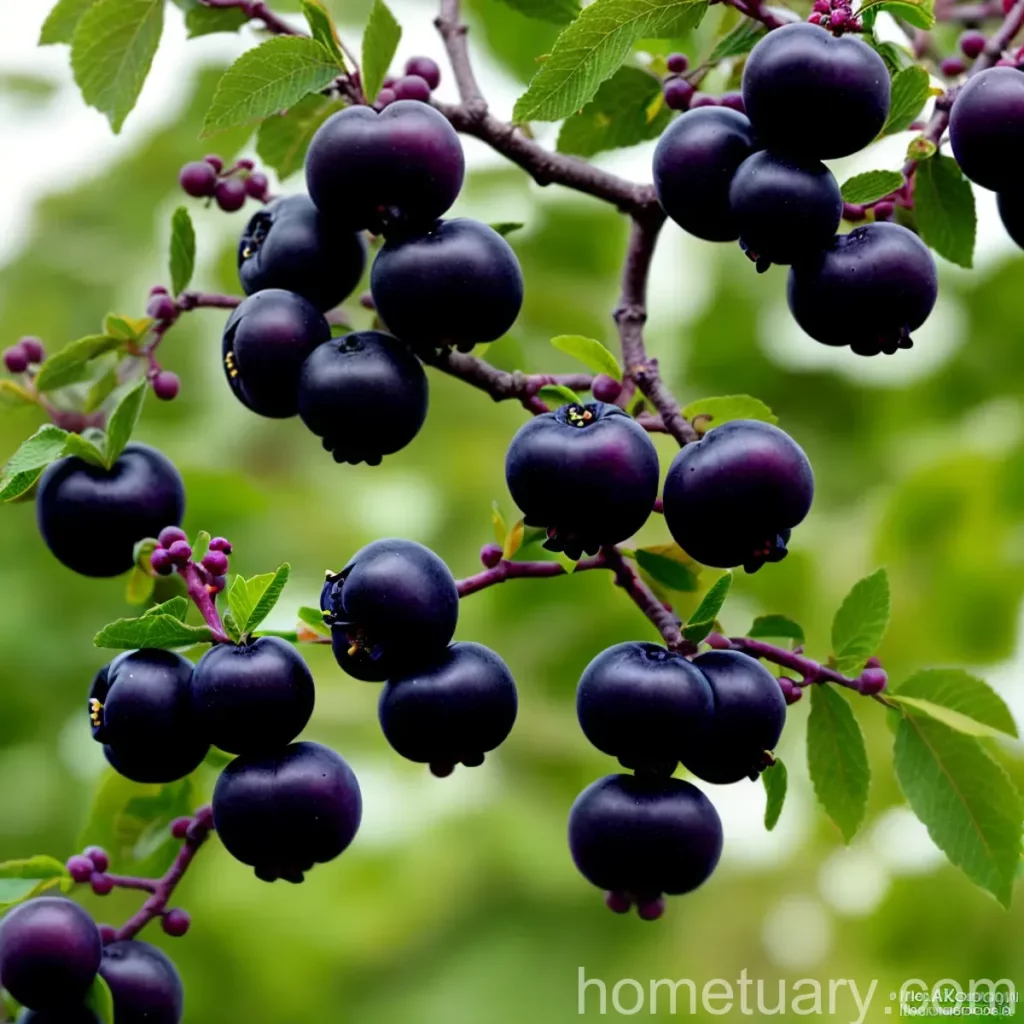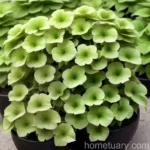Black Chokeberry (Aronia melanocarpa ‘Morton’ IROQUOIS BEAUTY): A Comprehensive Guide
As a plant scientist, I am excited to delve into the intriguing world of the black chokeberry (Aronia melanocarpa ‘Morton’ IROQUOIS BEAUTY). This resilient shrub, known for its ornamental and practical uses, exhibits a myriad of fascinating characteristics. In this comprehensive guide, we will explore the intricate details of the black chokeberry, ranging from its cultural needs to common diseases and pests it may encounter. Let’s embark on this enlightening journey and uncover the many facets of the black chokeberry.
What is Black Chokeberry (Aronia melanocarpa ‘Morton’ IROQUOIS BEAUTY)?
Black chokeberry, scientifically known as Aronia melanocarpa ‘Morton’ IROQUOIS BEAUTY, is a deciduous shrub celebrated for its ornamental and functional attributes. Belonging to the Rosaceae family, this plant is native to eastern North America and is commonly found in wet woods and swamps. The ‘Morton’ cultivar, also known as IROQUOIS BEAUTY, is a particular selection of the species Aronia melanocarpa, valued for its distinct features and adaptability.
Key Takeaways – Black Chokeberry (Aronia melanocarpa ‘Morton’ IROQUOIS BEAUTY)
Before we delve into the intricate details of black chokeberry, let’s highlight some key takeaways for quick reference:
- Botanical Name: Aronia melanocarpa ‘Morton’ IROQUOIS BEAUTY
- Common Name: Black chokeberry
- Cultivar: ‘Morton’ (IROQUOIS BEAUTY)
- Family: Rosaceae
- Uses: Ornamental, medicinal, and culinary
- Key Characteristics: Dark purple-black fruits, vibrant autumn foliage, and abundant blooms
- Growth Habit: Deciduous, multi-stemmed shrub
- Hardiness Zone: 3-8
- Mature Height: 3-6 feet
- Mature Spread: 3-6 feet
- Sunlight: Full sun to partial shade
- Soil: Moist, well-drained, acidic soil
- Diseases: Susceptible to leaf spots and twig blight
- Pests: Vulnerable to aphids and spider mites
- Special Feature: High antioxidant content in fruits
Now, let’s take a deeper dive into the various aspects of black chokeberry, starting with its cultural needs.
Culture
The successful growth and development of black chokeberry are contingent upon providing the appropriate cultural conditions. Here are some essential factors to consider when cultivating and caring for this resilient shrub:
Water
- Optimal Moisture: Black chokeberry thrives in consistently moist soil. While it can withstand short periods of drought once established, it prefers to be grown in a location with access to regular moisture.
- Avoid Waterlogging: Although it favors moist conditions, it is essential to prevent waterlogging, as excessively wet soil can lead to root rot. Ensuring well-drained soil is crucial for its overall health and vitality.
Sunlight
- Sun Requirements: Black chokeberry exhibits adaptability in terms of sunlight requirements, tolerating both full sun and partial shade. However, it tends to produce more abundant fruiting and vibrant foliage when exposed to sufficient sunlight.
Fertilizer
- Minimal Fertilization: This hardy shrub generally does not require heavy fertilization. However, applying a balanced, slow-release fertilizer in early spring can support its growth and overall vigor.
Soil
- Acidic Soil Preference: Black chokeberry thrives in acidic soil with a pH ranging from 4.5 to 6.5. It is vital to ensure that the soil is well-drained and rich in organic matter to promote optimal growth.
Pruning
- Pruning Schedule: Pruning is typically conducted during late winter to early spring while the plant is dormant. This practice helps maintain a compact and tidy shape, as well as encourages vigorous regrowth and abundant flowering.
Propagation
- Division: Black chokeberry can be propagated through division, especially when rejuvenating older clumps or expanding its presence in the landscape.
- Softwood Cuttings: Utilizing softwood cuttings taken in early summer can also facilitate the propagation of this versatile shrub.
Container Popularity
- Container Gardening: Due to its compact growth habit and ornamental appeal, black chokeberry, particularly the ‘Morton’ cultivar, is becoming increasingly popular for container gardening. Its striking appearance and low maintenance requirements make it an excellent choice for adorning patios and urban spaces.
Common Diseases
Despite its resilience, black chokeberry is susceptible to certain diseases that can affect its overall health and appearance. Understanding these potential afflictions is crucial for effective management and maintenance of this remarkable shrub.
Disease Diagnosis
- Leaf Spot: The presence of circular, dark lesions on the leaves may indicate the onset of leaf spot diseases. These fungal infections can cause premature defoliation and reduced vitality.
- Twig Blight: Black chokeberry may be prone to twig blight, characterized by the dieback of young twigs and branches. Vigilant monitoring and prompt intervention are essential to curtail the spread of this ailment.
Common Pests
In addition to diseases, black chokeberry is also susceptible to pest infestations that can compromise its growth and aesthetic appeal. Here are some common pests to watch out for:
- Aphids: These small, sap-sucking insects can congregate on the new growth of black chokeberry, leading to distorted foliage and reduced vigor.
- Spider Mites: Warm and dry conditions can promote the proliferation of spider mites, which can cause stippling and discoloration of the leaves.
Now that we have covered the cultural needs, diseases, and pests associated with black chokeberry, let’s explore some botanist’s tips for cultivating and caring for this exceptional shrub.
Botanist’s Tips
1. Ample Moisture: Providing consistent moisture, especially during the establishment phase, is critical for the long-term health and vigor of black chokeberry.
2. Moderate Fertilization: Avoid over-fertilization, as excessive nutrient levels can negatively impact the natural balance and resilience of this hardy shrub.
3. Pruning Precision: When pruning black chokeberry, ensure that cuts are made at a slight angle just above a bud to facilitate optimal healing and regrowth.
4. Aphid Vigilance: Regularly monitor new growth for signs of aphid infestations, especially during the spring and early summer.
5. Early Disease Intervention: Swiftly address any signs of leaf spot or twig blight to prevent the spread of these fungal diseases.
Fun Facts
- Black chokeberry fruits are renowned for their high levels of antioxidants, making them a valuable addition to dietary and medicinal practices.
- The vibrant autumn foliage of black chokeberry showcases stunning hues of red, orange, and purple, adding a visual spectacle to landscapes.
Now that we have gained a comprehensive understanding of black chokeberry, including its cultural needs, diseases, pests, and botanist’s tips, let’s explore some additional resources for further information and insights into this remarkable shrub.
Links to External Resources
- Aronia melanocarpa ‘Morton’ – Missouri Botanical Garden
- Growing Black Chokeberries – University of Maine Cooperative Extension
- Aronia melanocarpa: A Plant That’s So Good for You, It’s Beautiful – University of Maryland Extension
In conclusion, the black chokeberry (Aronia melanocarpa ‘Morton’ IROQUOIS BEAUTY) stands as a resilient and captivating shrub, offering a multitude of attributes that make it a valuable addition to diverse landscapes. From its striking fruits and vibrant foliage to its adaptability and multifaceted uses, this exceptional plant continues to enthrall enthusiasts and horticulturists alike. By providing the necessary cultural care, addressing potential diseases and pests, and integrating botanist’s tips, we can fully appreciate and harness the full potential of the black chokeberry in various settings, whether it be in traditional garden beds or innovative container arrangements.
Remember, the intricate beauty and practical benefits of the black chokeberry are truly remarkable, making it a plant worthy of admiration and careful cultivation.
So, whether you are drawn to its ornamental allure, its wellness-promoting fruits, or its ecological contributions, the black chokeberry undoubtedly holds a special place in the botanical realm, captivating hearts and minds with its resilience, versatility, and natural splendor.















